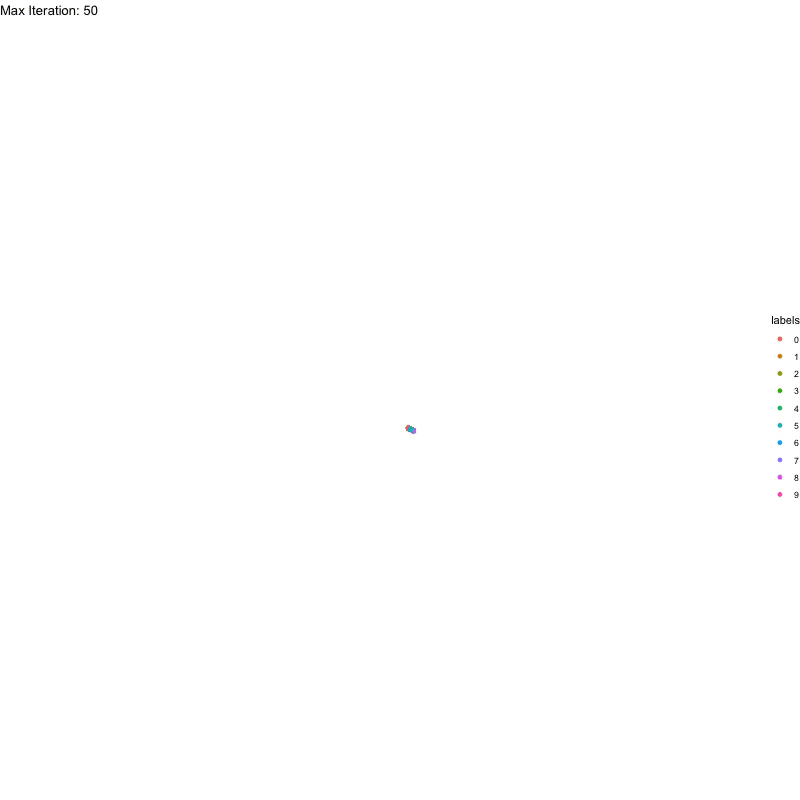library(dslabs)
library(rsvd)
library(dplyr)
library(tidyverse)
library(gganimate)
source('~/development/FIt-SNE-master/fast_tsne.R', chdir=T)
set.seed(1234)
tsne_iterate <- function(data, iteration_sequence) {
start <- Sys.time()
tsne_df_tmp <- data.frame()
run <- 0
for (i in iteration_sequence) {
run <- run + 1
message(paste('Run', run, 'of', length(iteration_sequence)))
tsne_tmp <- data %>%
fftRtsne(perplexity = nrow(.)/100,
theta = 0.5,
max_iter = i,
learning_rate = nrow(.)/12,
rand_seed = 1234) %>%
as.data.frame %>%
mutate('iter' = i)
tsne_df_tmp <- rbind(tsne_df_tmp, tsne_tmp)
}
message(paste('Time to complete:', round(Sys.time() - start, 2), 'min'))
return(tsne_df_tmp)
}
down_sample <- sample(nrow(mnist$train$images), 10000)
tsne_df <- tsne_iterate(mnist$train$images[down_sample,], seq(50,2000,50))
colnames(tsne_df) <- c('tSNE1', 'tSNE2', 'iteration')
tsne_df %>%
mutate('labels' = rep(as.factor(mnist$train$labels[down_sample]), length(unique(iteration)))) %>%
ggplot(aes(tSNE1, tSNE2, colour = labels)) +
geom_point() +
theme_void() +
transition_states(iteration,
transition_length = 1,
state_length = 1) +
labs(title = 'Max Iteration: {closest_state}')
